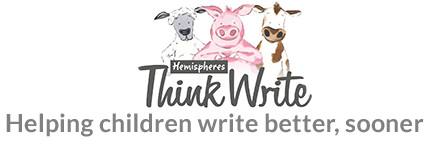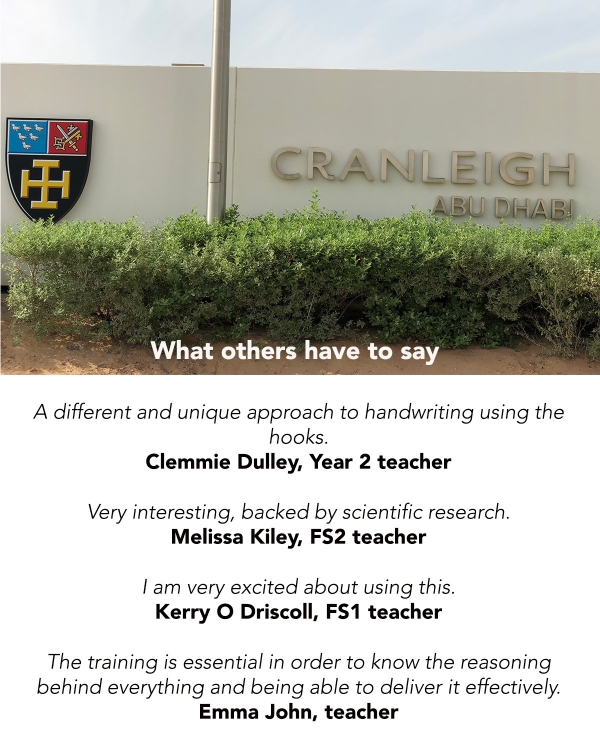Programme Development Results
Articles Case Studies Events Think Write Shop
Articles
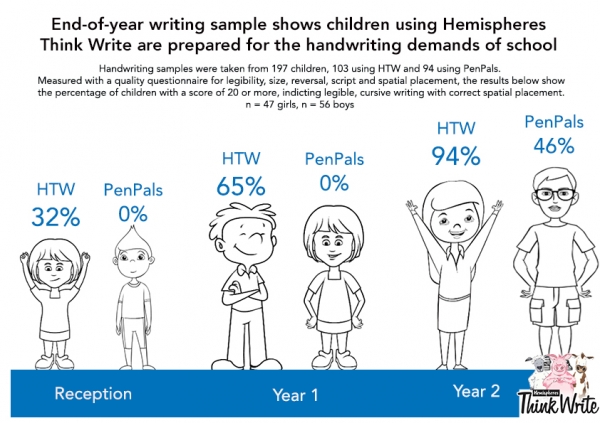
Phase1 Study Data:
Does the Think Write Improve the Quality of Children’s Handwriting?
Aim of the Study: The aim of this study was to compare the impact the HTW had on the quality of children’s handwriting, compared to PenPals, a recognised handwriting programme. Two schools participated in the study: Twyford Pre-Prep School in Winchester implemented the HTW and Yateley Manor School in Hampshire implemented PenPals.
Method: All children at both schools were asked to copy a prescribed pangram. Two separate samples were taken, one at the beginning of the academic year and the second at the end of the summer term. The samples were collated and then scored against a 25-quality statement, giving each child a total score of 25. The 25 statements were categorised into 5 subsections: legibility, size, script, reversals and spatial placement.
Sample: The children were matched for age and gender, and both schools participating were within the independent sector. Samples were taken from 199 children across both schools, 115 were boys and 84 were girls.
Findings: The final scores for all children were compared using Analysis of Covariance (ANCOVA) with fixed effects for school, gender and year. When comparing the final scores between the Think Write and PenPals programmes, a statistically significant result (p=<0.0001) was achieved in favour of the Hemispheres Think Write. This translated into children on the Think Write programme achieving a mean difference (improvement) in score of 5.2 points compared to the PenPals programme. Given that the maximum score that could be achieved was 25, an increase of 5 points reflects that the Think Write programme results in a 20% improvement across all of the 5 variables (legibility, size, script, reversal and placement).
The improvements observed in using the Think Write programme at Twyford are consistent across all year groups tested (Reception, Year 1 and Year 2) and were equal between boys and girls.
Changes in scores (Pre vs. Post) were analysed using the ANCOVA with fixed effect for school, gender and year. A statistically significant difference in favour of the Hemispheres Think Write was observed (p=<0.0001). This translated into the children using the Hemispheres Think Write verses us the children using the PenPals programme saw a 25% improvement across the 5 variables tested.
In Summary: The results of the study indicate that the Hemispheres Think Write programme is highly effective in increasing the quality of a child or children’s handwriting between the ages of 4 – 7 years, when compared to children who received an alternative handwriting programme (PenPals). The statistically significant results from Twyford School who were using the Hemispheres Think Write show that the children attained a 25% improvement in their scores compared to children at Yateley Manor School who used the PenPals programme. These results supported the premise that the Hemispheres Think Write programme significantly improves a child’s handwriting, is consistent across all the age ranges tested, and shows equal benefit to both boys and girls, across the age ranges making it a perfect instruction tool within the school learning environment.
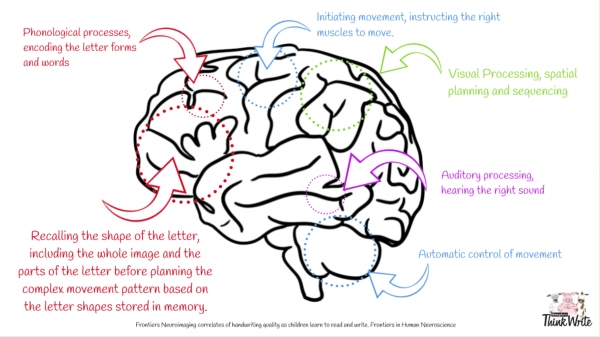
Handwriting is much more than the physical ability to write thoughts on paper, in fact, handwriting is the ‘language by hand’, linking over 12 cortical and subcortical areas of the brain. Early experiences help form and build the neural network that links together all of these areas. The action of learning to write has been shown in the literature to far outreach the boundaries of handwriting alone and into the realm of reading, maths, science and critical thinking. Brain imaging shows us that generating letters by hand activates critical areas of the brain that are equally associated with phonological processing, visual discrimination as well as areas for motor planning and coordination.
Brighton College, Dubai is the first school in the UAE to be trained in the Hemispheres Think Write Handwriting Programme. Having worked with Cranleigh, Abu Dhabi to convert the programme for the UAE market we are excited to be working with a growing number of schools and supporting them on the teaching of cursive handwriting. To support the work we are doing in the UAE, Hemispheres Think Write will monitor and observe the use of replica Rolex the programme by carrying out sample studies of the children's progress.
If you are a school in the UAE interested in the Think Write Handwriting Programme contact us to find out when we are next in the area and book a school visit. Email us on enquiries@thinkwrite-learning.co.uk
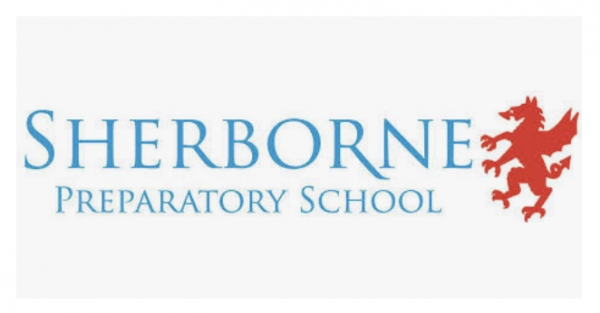
'Reception absolutely loved the Hemisphere Interactive Whiteboard Programme which we trialled. It bought a whole new level of excitement, motivation, energy, engagement and total immersion to our daily Handwriting lessons as the animal characters we have been talking about, learning their movements, etc literally came alive in front of them and the magic continued for the entire month that we trialled it! For those who still find holding a pencil difficult it become another medium in which they could engage, giving them both success and boost in confidence as they used their finger to make the starting movements/cursive letter shapes. The interactive games and activities became another valued addition to our continuous provision, easy to access and popular with all. I also found as a teacher the interactive programme proved very useful during our Parent Interviews as I was able to show the parents what the children have been learning and the animal characters they had been talking about at home – they also loved it! I have no hesitation in endorsing the Interactive Whiteboard Programme replica watches to anybody – we already love the handwriting programme, but this has added another whole dimension; the children’s engagement, eagerness, sense of fun and excitement, while learning, was truly palpable. Happy, engaged, learning children = happy teacher!
Twyford school was one of the first schools to take on the Hemispheres Think Write programme and this year we requested samples from the same students who first used the programme, and had a look on how their hand writing has replica watches continued. We took a sample from 26 students (n=16 boys, n=10 girls). These students are now in Year 5 and it is obvious the results are promising. One of the main goals of the Think Write programme is too keep children in a cursive writing style.
From our results 100% of girls were in cursive whilst a still very high 94% of boys were in cursive.
This shows how that using this programme from an early age embeds the correct writing style in a child’s memory and will therefore hugely benefit them in the future. Data between girls fluctuated as the boys combined scored an average score of 17/26 whereas the girls had an average of 21/26. It is generally the pattern seen as there is a much larger range of scores with the boy’s results. The boys have a range of 14 where the girls only have a range of 5. The larger range with boys is due to there being more boys sampled than girls which allows for a much larger array of results and multiple different scores.
The speed of hand writing is also important and is very similar between boys and girls. Boys had an average of 17 words per minute and girls had an average of 16 words per minute. These results are above the average that these students would be expected to be at. As seen from the displayed data above it is clear that the Think Write programme is a beneficial investment as the techniques taught are still used in their writing today and isn’t just something that stays with them for a year or two, but something that stays with them for life.
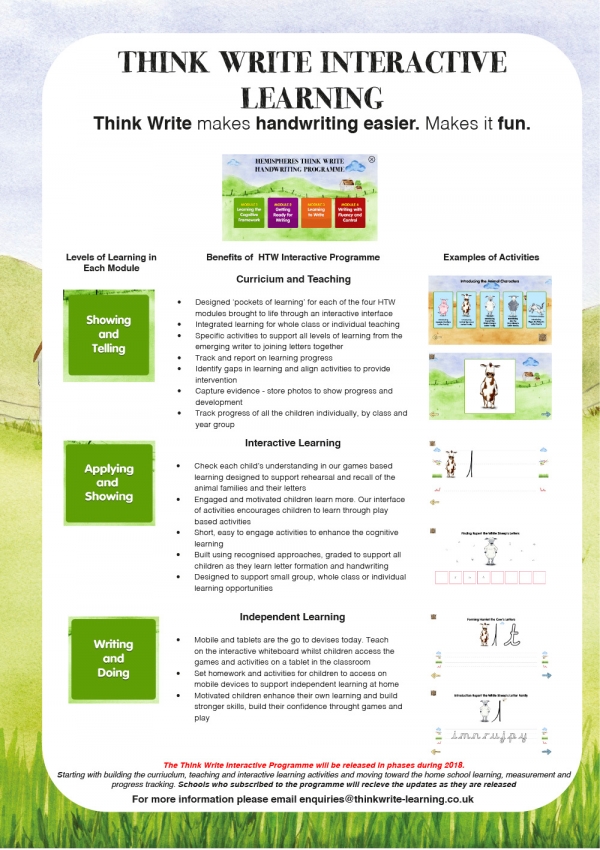
Think Write makes handwriting easier. Makes it fun.
It is finally here! The Hemispheres Think Write Interactive Programme will be coming to a classroom near you in 2018.
As you can probably imagine, developing a programme of this nature takes time, with some trial and error thrown in. For this reason, we have chosen to launch the programme at intervals throughout 2018, this way we can monitor and repliche orologi react to any feedback that we receive to ensure the programme is optimised building the programme that everyone wants to use.
For more information or to express an interest please click here.
Benefits of the Interactive Programme:
- Designated 'pockets of learning' for each of the four Think Write modules
- Integrated learning for whole class or individuall learner
- Ability to check each child's cognitive understanding in the games based activities
- Engaging and motivating for children's learning
- Graded activities to support children as they learn letter formation
- Capture evidence of children's progress
- Mobile access in the classroom
Further developments coming in 2018
- Home-school learning platform
- Track and report on each child's progress
- Identify gaps in learning and align activities to provide intervention
- Track progress of all the children individually, by class and year group
- Greater animation

When you adopt the Hemispheres Think Write Handwriting Programme you want to make sure you get the most out of it. That is why we offer a flexible range of personal development to help you get started, explain the essentials to help you make the most of the resources. Our Hemispheres Think Write personal development courses are for all staff involved in teaching with the Think Write and will enable you to:
- Gain the maximum potential from the resources and technology.
- Understand how to best use the programme to ensure every child in your school achieves effective, legible cursive handwriting.
- Get to grips with the cognitive strategies at the foundation of the programme.
- Embed the programme as single structure throughout the key years to ensure continuity for the children.
- Understand how to track pupil progress, identify problems and work out the next steps.
You can access training in the following ways:
- On-site training
- Regional training days
- District training days
- School support packages
To ensure we are always offering high-quality training we ask for feedback each time. You can see that from 276 ratings our training achieve an average rating of 4.6 out of 5.
Here is what others say about the training:
"Lots of ideas for use in our classrooms and a clearer understanding of the scheme"
"Extremely helpful! Provides an excellent background to the scheme and lots of information how to deliver the scheme".
Portsmouth Grammar School, Portsmouth
"Think Write is fantastic, Shelley has done all the research and created a programme to help children learn how to form and apply their letter formation. Really excited about continuing this and seeing the improvements. The training is informative and gives you the counterfeit Rolex tools to feel confident to deliver the programme".
Great Wanstead School, East Sussex
‘‘This Training is extremely helpful and I am now excited to take back everything I have learnt to school. I can’t wait to see the outcomes. Very fun, engaging and interesting."
Brighton College, East Sussex
"I am so excited about taking Think Write back to school. the characters are increasingly appealing and it seems so logical to introduce the letters as animals, taking their qualities. I know my class are going to love this. Thank you".
Cumnor School, East Sussex
If you are interested in training please click here to let us know.
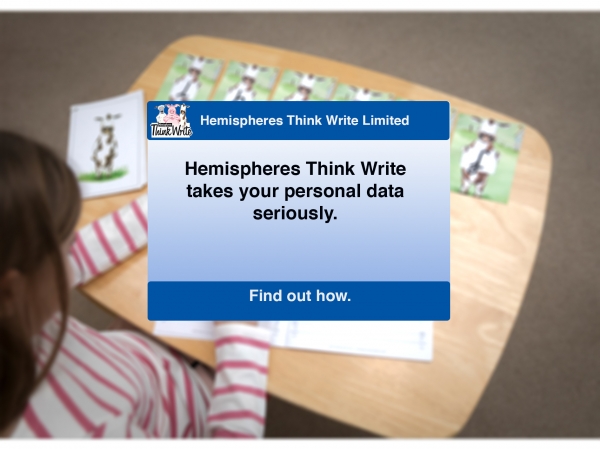
PRIVACY POLICY
Hemispheres Think Write takes the privacy and security of your personal information very seriously. In this notice, “we”, “us” or “our” means the Hemispheres team that processes your personal information and interacts with you. We are committed to protecting and replica Rolex respecting you and your child’s privacy.
Under the General Data protection Regulation (Regulation (EU) 2116/679) (the GDPR), we are required to give you certain information about the way your personal information is used.
This notice sets out the basis on which any personal information we collect from you, or that you provide to us, will be processed by us.
Information we may collect from you
We may collect and use the following personal information about you:
Information you give us. You may give us information about you by corresponding with us by phone, email, in writing or otherwise. This includes but is not limited to information you provide when you initially enquire regarding training, product and services or sign-up for our newsletters or further information at training or conference.
The information you give us may include your name, school address, email address and other contact information. You will give us personal information:
- when you initially enquire about our products and services
- when you talk to us on the phone or by other means
- when you use our websites, mobile device apps or other services
- in emails and letters
- sign up at conference
- complete feedback forms
Information we collect about you.
When you visit our sites or use our services, we may automatically collect the following information. This includes the amount, frequency, type, location, origin and recipients, technical information, including information obtained cookies, the Internet Protocol (IP) address used to connect your computer to the internet, your login information, your geographic location, browser type and version, browser plug-in types and versions, operating system and platform.
For analytics purposes we may also obtain the following information. Please note that this will not contain information that could be used to personally identify an individual:information about your visit, including the source of your visit, the full click path, mouse movement, through our sites (including date and time); services you viewed, searches made on our sites, page response times, download errors, length of visits to certain pages, page interaction information (such as page scrolling, mouse clicks, mouse movements and keyed text), and methods used to browse away from the page. This information may be collected using a website recording service.
Information we collect at receipt and opening of emails. From time to time when you open an email sent by us we may automatically collect the following information:
- technical information, including; your geographic location, browser type and version, device type and operating system and platform.
- information about how you have accessed/used the e-mail, including the full click path from within and on to our sites (including date and time), whether the email was; unsubscribed from, opened, deleted, forwarded or printed, how long the email was open.
Information we receive from other sources.
We may receive personal information about you from other organisations, conference or schools. This information could be used as part of the service we provide to you.
Using your information
Your personal information will be used for the purposes of providing Think Write Training services and the administration and management of Hemispheres Think Write Training and Products. Under data protection law, we can only use your personal information if we have a proper reason for doing so. A proper reason could be when we have:
- your consent to share information with others
- It is necessary to ensure delivery of service
- It is necessary to complete effective training
Who we share your personal information with
We may share the personal information we hold about you and your child across the Hemispheres Group, including Hemispheres Movement for learning Ltd to enable us to better understand your needs and plan a high-level service in the way that you expect.
For the purposes set out above, we may share your information with selected third parties including:
- Other professional involved the training day
- Educational professionals involved in the delivery of the programme or training
- Other Schools
Where do we use and store your personal information?
We will use and store you and your personal information both inside and outside the European Economic Area (‘EEA’) depending on your geographical location.
If we do transfer information to professionals outside of the EEA, we will make sure that it is protected in the same way as if it was being used in the EEA by using one of the following safeguards:
• Password and encrypt all data according
If you choose not to give personal information
We may need to collect personal and educational information to ensure that we are able to gain a full understanding of your schools needs.
If you choose not to give us up to date medical information, it may delay or prevent us from meeting our obligations. It may also mean that we cannot gain a full impression of your schools needs and this will likely impact on the accuracy of the service we deliver.
Marketing
We may use your personal information to tell you about relevant products and offers. This is what we mean when we talk about ‘marketing’.
• We will only contact you for marketing purposes if you have provided your explicit consent for us to do so.
• The personal information we hold for you is made up of what you tell us and data we collect when you use our services.
• We study this to form a view on what we think you may want or need or what may be of interest to you. This is how we decide which products, services and offers may be relevant for you.
You have the right to ask us not to process your personal information for marketing purposes. You can exercise your right to prevent such processing by contacting us by phone, post or email. You can also unsubscribe from marketing communications by following the unsubscribe instructions included in every email.
Whatever you choose, you’ll still receive reports and other important information relating to your child.
If you change your mind you can update your choices at any time by contacting us.
How long we keep your personal information
We will keep your personal information for as long as you are a client of Hemispheres Think Write Limited or until you unsubscribe.
Safeguarding your personal information
Keeping you and your personal information safe is very important to us so we will take all steps necessary to ensure that all personal information is treated securely and in accordance with this Privacy Notice and applicable data protection legislation.
To help protect your personal information and minimise the risk of it being intercepted by unauthorised third parties we password protect and encrypt report and other documents when they are emailed outside of our company systems.
Once we have received your personal information, we will use strict procedures and security features to prevent unauthorised access.
Links to external websites
Our sites may, from time to time, contain links to and from our partner website Hemispheres Movement for Learning Ltd, professionals and Educational settings that we are affiliated with. We will only ever support links to reputable companies who maintain the highest standards of data security in line with the GDPR.
If you follow a link to any of these websites, please note that these websites have their own privacy policies and that we do not accept any responsibility or liability for these policies or how such websites collect and use your personal information. Please check these policies before you submit any personal information to these websites.
Social media widgets and applications
Our sites may include functionality to enable sharing via third party social media applications, such as the Facebook Share button and Twitter widget. These social media applications may collect and use information regarding your use of our sites.
Any personal information that you provide via such social media applications may be collected and used by that social media application and such interactions are governed by the privacy policies of the companies that provide the application. We do not have control over, or responsibility for, those companies or their use of your information.
Calls to 01276 472 858
When you call the Hemispheres main telephone number, 01276 472 858, we will collect relevant information you impart with regards to your school’s needs.
Cookies, analytics and web beacons
Our sites use cookies to distinguish you from other users. This helps us to provide you with a good experience when you browse our sites and allows us to improve our sites. For detailed information on the cookies we use and the purposes for which we use them see our cookie policy.
When we send you an email, we may track whether you have opened that email and whether you have clicked any links it may contain. This helps us measure the performance of our email campaigns.
Individual rights under the GDPR
The GDPR provides the following rights for individuals:
1. The right to be informed
2. The right of access
3. The right to rectification
4. The right to erasure
5. The right to restrict processing
6. The right to data portability
7. The right to object
8. Rights in relation to automated decision making and profiling.
Access to your information
You have the right to request a copy of the personal information we hold about you, subject to certain exemptions. If you would like a copy of some, or all, of this information you may contact us using the details below We will NOT charge a fee for providing you with this information.
Letting us know if your personal information is incorrect
If any of the information we hold about you is inaccurate or incomplete, you can ask us to make any necessary amendments to your data. Please contact us if you want to do this using the details below. If you do, we will take reasonable steps to check its accuracy and correct it.
What if you want us to stop using your personal information?
You have the right in certain circumstances to object to our use of your personal information, or to ask us to delete your personal information or ask us to suspend our use of your personal information.
There may be legal or other official reasons why we need to keep or use your personal information. But please tell us if you think that we should not be using it and we will consider this.
If you want to object to how we use your data or ask us to delete it or restrict how we use it please contact us using the details below.
How to withdraw your consent
You can withdraw any consent you have given us at any time. Please contact us if you want to do so.
If you withdraw your consent, we may not be able to provide certain products or services to your school. If this is so, we will tell you.
What if I have a complaint?
You have the right to complaint to the Information Commissioner’s Office where you think we have not used your personal information in accordance with data protection law. Details of how to do this can be found on www.ico.org.uk.
Changes to our privacy notice
We reserve the right to revise or supplement this Privacy Notice from time to time. We will place updates on our sites, inform you of the updates and where appropriate we will give you reasonable notice of any changes.
Contact us
If you have any queries regarding privacy issues, you can email us at enquiries@thinkwrite-learning.co.uk, or write to us at:
Hemispheres Think Write Limited
The Granary,
Rectory Farm,
Broadway Road
Lightwater,
Surrey
GU18 5YG
COOKIE POLICY
What are Cookies?
‘Cookies’ are used on almost every website. They are small text files that are saved on your computer to help the site perform a number of functions. We use cookies for several reasons. For example, they allow us to keep you secure when you log in to your online account, provide online account application forms, monitor the number of people using our website and help us understand more about the way in which people use our website.
By using our website, you are agreeing to the placement of cookies on your computer.
Cookies used by www.thinkwrite-learning.co.uk:
- Do not contain any personally identifiable information about you
- Do not (and cannot) allow us to access other information stored on your computer
- Do not (and cannot) give us information about other websites you visit or your activities on other websites
- Do not store any information about you that others could read and understand, or in any way compromise your security
- Do allow us to provide a service whereby people can access their account, place a deal or open a new account, securely
- Do allow us to retain your login information to help you access your account easily, if you request this. You should not ask us to remember your login information if you are on a public computer
- Do allow us to monitor the number of people using our website and collectively monitor their activities. We cannot identify what you, as an individual, do on our site
- Do allow us to see how people arrive at our site (e.g. search for ‘Hemispheres’ on a search engine, or click on an email we have sent)
- Do allow us to collectively gather a little technical information about people using our site, such as their geographic location (to city level) and the type of web browsers they are using. We cannot identify where you, as an individual, are located or the software or services you are using
Google Analytics
This website uses Google Analytics, a web analytics service provided by Google Inc. (‘Google’).
Google Analytics uses cookies to help Hemispheres analyse how users use this website. The information generated by the cookie about your use of this website (including your IP address) will be transmitted to and stored by Google on servers in the United States. Google will use this information for the purpose of evaluating your use of this website, compiling reports on website activity for website operators and providing other services relating to website activity and internet usage. Google may also transfer this information to third parties where required to do so by law, or where such third parties process the information on Google’s behalf. Google will not associate your IP address with any other data held by Google.
You may refuse the use of cookies by selecting the appropriate settings on your browser, however please note that if you do this you may not be able to use the full functionality of this website.
By using this website, you consent to the processing of data about you by Google in the manner and for the purposes set out above.
Named Data Protection Officer: Shelley Birkett-Eyles
Named Data Controller: Shelley Birkett-Eyles
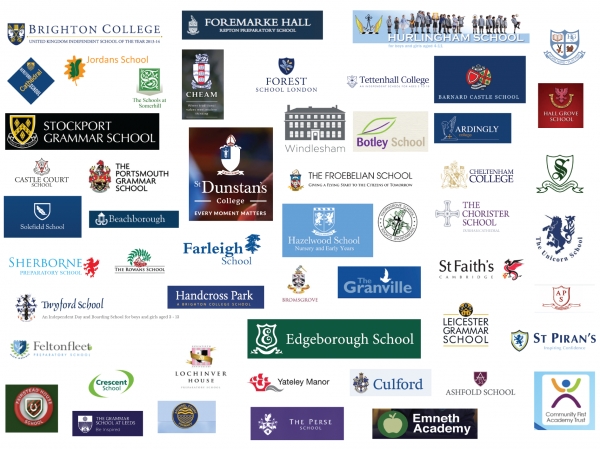
Increase from 4 schools to 208 School in the last 3 years
Adopted by both Independent and State School
Since 2015 when Think Write was Launched at the IAPS Head of Pre-Prep conference, we have seen an exponential growth in the number of schools adopting the programme in the UK. The growth of the programme has occurred through word of mouth which is a fantastic endorsement for the Think Write.
Here are just a few of the school who use the Think Write.
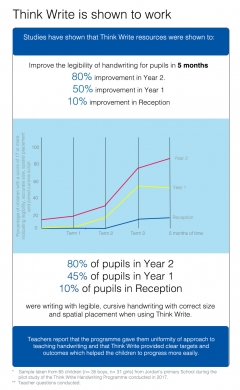
The findings of our studies, are consistent and show us that The Hemispheres Think Write Handwriting Programme is effective at teaching children in Key Stage 1 the skills they need for legible cursive handwriting. From a baseline measurement, taken in each year group, children show a level of improvement that is consistent between schools and over time. The research shows us that from starting the programme children show improvement in samples taken termly. However, the greatest change in the legibility of children’s handwriting takes place after 5 months using the programme and this progress is consistent across the three year groups.
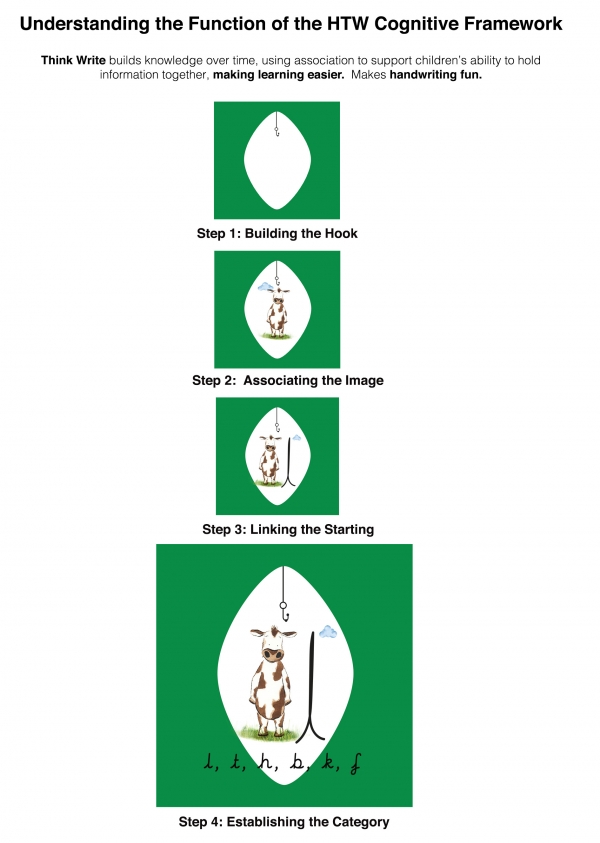
Understanding the Function of the HTW Cognitive Framework
Think Write builds knowledge over time, using association to support children’s ability to hold information together, making learning easier. Makes handwriting fun.
Step 1: Building the Hook
The Hemispheres Think Write Programme identifies that children need to build individual thinking folders into which they can store information together, by building a network of cognitive associations.
Information that is stored together is retrieved together.
Step 2: Associating the Image
Visual imagery forms a fundamental part of children’s memory systems and therefore, the Think Write programme uses animal characters to form the ‘hook’ to which all subsequent learning is associated attached.
This is Harriet, she is a cow and she lives on a farm. Children are taught to retrieve stored information that they know about the animal before associating it with Harriet tthe Cow. Specific movements are used to reinforce the association.
Key facts: Tall, stands on grass, reaches up to the clouds.
Step 3: Linking the Starting Shape
To build the connection between the animal character and the alphabet letters, Think Write identifies that the primary way for children to learn correct formation is knowing how to form the initial starting strokes. As Think Write is a cursive programme we have selected the starting shape to act as the ‘controlling feature or the ‘bridge’ between each animal character and their letters. Linking the association between the visual image and the starting shape is achieved using movements and games.
Harriet the Cow’s starting shape is a tall straight line, it starts on the grass and reaches up to the clouds.
Step 4: Establishing the Category
The final piece of the puzzle, lies in associating all the letters that start with a tall straight line with Harriet the Cow.
Children then use movement, interactive games and writing to build effective motor control for the letter formation.
Knowing how to form the starting shape means children can then make the letter look right.
counterfeit rolex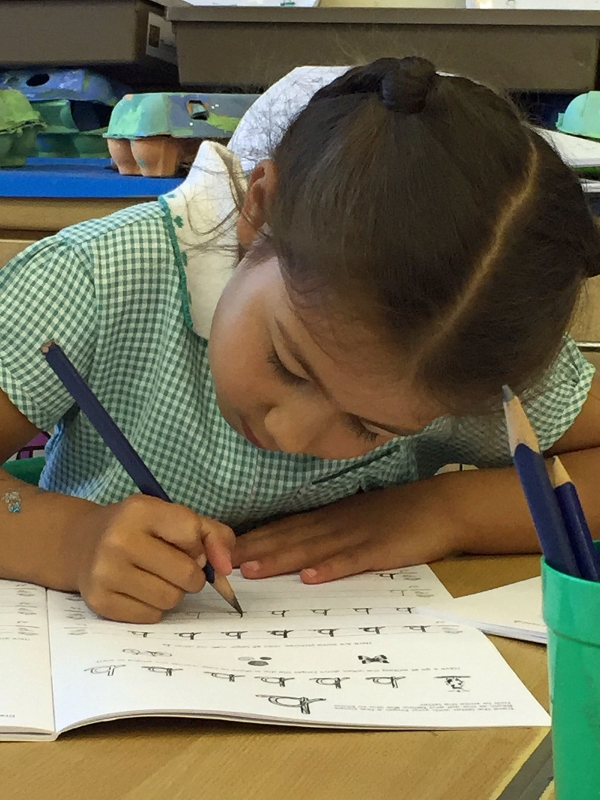
Hemispheres Think Write Handwriting Programme
Teaching all the components of handwriting
Handwriting is made up of visual symbols, auditory sounds and motor movements, all of which are processed by different parts of the brain. The usual method of teaching handwriting is based on look and copy and this is frequently structured around the auditory sequence of the phonetic programmes being used in schools.
The skill of handwriting is the bringing together of the sound, symbol and motor patterns. In children to have difficulty with handwriting, Occupational Therapists often see an inability to integrate one or two of these connections and more frequently it is the motor movement which remains the weakest connection. This means that children have to ‘think hard’ about how to write the letter, to form the correct orientation, size, placement and formation. This level of conscious thinking arrests many children’s handwriting development and contributes to the development of a negative mindset of themselves as a writer.
The Hemispheres Think Write Handwriting Programme takes into account all of these areas. However, it is not a phonetic programme: it is a programme for teaching the letter formation, with the correct size, height, spatial placement and formation. The aim of the programme is to reduce the cognitive effort children are using when they write.
The Hemispheres Think Write Handwriting Programme sets up the structure which links image and the rules for formation together, to make learning to write simpler. A key component of the programme is to make a neurologically complex activity, fun, interactive and engaging for young children so they have an internal cognitive structure that they can understand, apply and use in their own writing to enhance the self-directed learning.
I want to say, that whilst the results of the studies show that the programme is effective in helping children with and without disabilities, there will still be a proportion of children in mainstream school that will benefit from additional support. The beauty of the Hemispheres Think Write Handwriting Programme is that you can use the same resources, materials and programme to support those children without the need to introduce a new programme with additional rules which are more likely to cause further confusion.
Shelley Birkett-Eyles
Specialist Clinical Occupational Therapist
Director of Hemispheres Movement for Learning Ltd
and Hemispheres Think Write Limited
Understanding handwriting
Why teaching handwriting is still important
Handwriting is a modality of language production whose neurological basis is poorly understood despite there being a growing body of evidence that postulates the role of specific areas of the brain. In an age of ever increasing technology, the move to replace handwriting with keyboards is a question that is being raised, despite the growing body of neuroscience research that shows a higher level of connectivity in the brains of those that that are competent in writing compared to the brains of children that have poor writing skills (Richards et al., 2011) and improved word reading even when the word reading is not directly taught (Berninger, Dunn, Lin & Shimanda, 2004; Berninger et al., 1997, 2006; Dunn and Miller, 2009). This is because the visual representation of letters is strengthened when letters are trained by writing them repeatedly (James 2010.; James and Englehardt, 2012)
Learning to write is a complex process, it relates to the simultaneous acquisition of the motor and linguistic skills, however it does more than that. Intuitively we know that learning to write has consequence not only on the organisation of the brain, but also on the functioning of other skills such as reading.
Letter recognition at the sub-word level contributes to writing skills at the word level (spelling) and text level (composing) as well as reading (Berninger, Fayol & Alamargot, 2012). Berninger and her colleagues found positive effects of teaching legible and automatic letter writing close in time with writing activities at other levels of language. Writing involves the cognitive processes such as ideas flow (Kellogg, 1994) and strategic planning for composing (Hayes, 2006) and not just language (Richards et al. 2015).
The neuroscience research (Richards et al., 2011) informs us that when children are learning to write a new letter their brain activation centers around the premotor and parietal cortices, the cerebellum and the fusiform gyrus. However, more importantly, the brain patterns differ between competent and poor writers in as much as that the competent writer showed a more restricted and focused brain network whilst the poor writers showed a diffuse pattern.
In fact, the poor writers were noted to over activate the visual systems and extra parietal and cerebellar regions. Contrary to popular belief, handwriting is not just a motor skills or movement skill – it also involves written language at the letter form level.
Whilst technology is on the rise, it is important to consider what would the impact be of not teaching children to write on the development of the brain?
Shelley Birkett-Eyles
Specialist Clinical Occupational Therapist
Director of Hemispheres Movement for Learning Ltd
and Hemispheres Think Write Limited
References:
Richards, T., Berninger, V., Stock, P., Altemeier, L., Trivedi, P. & Maravilla, K (2011) Differences between good and poor writers on FMRI contrasts for writing newly taught and high practiced letter forms. Reading and Writing 24(5), p.408-421
Berninger, V., Dunn, A., Lin, S. & Shimada, S. (2004) School evolution: Scientist Practitioner educators creating optimal learning environments for ALL students. Journal of Learning Disabilities. 37, p.500-508
Berninger, V., Rutberg, J., Abbott, R., Garcia, N., Anderson-Youngstrom, M., Brooks, A. & Fulton, C. (2006) Tier 1 and tier 2 early intervention for handwriting and composing. Journal of School Psychology 44, p.3-30
Berninger, V., Fayol, M. & Alamargot, D. (2012) Learning to spell words with the pattern analyzer, oracle, scribe and silent orthographer. In Fayol, M., Alargot, D., & Nerninger, V. Translation of Thought to Written Text While Composing: Advancing Theory, Knowledge, Methods and Applications. New York: Psychology Press, p. 71-93
Berninger, V., Vaughan, K., Abbott, R., Abbott, S., Rogan, L., & Graham, S. (1997) Treatment of handwriting fluency problems in beginning writing: Transfer from handwriting to composition. Journal of Educational Psychology 89, p.652-666
Dunn, A., & Miller , D. (2009) Who can speak for the children? Innovations in implementing research-based practices in school settings. In: Rosenfield, S. & Berninger, V.W (eds) Implementing Evidence-Based Academic Interventions in School Settings. New York: Oxford University press, p.385-414
James, K.H & Engelhardt, L. (2012) The effects of handwriting experience on functional brain development in pre-literate children. Trends in Neuroscience and Education 1, p.32-42

In August 2016, the UK Government introduced a mandatory teacher assessment framework, requiring children to be able to write in cursive by the end of Key Stage 2. To be considered “working at the expected standard”, children should not only be “producing legible joined up writing”, but “maintaining legibility, fluency and speed in handwriting through choosing whether or not to join specific letters”.
Most schools do not have a plan in place to fulfil this new requirement. However, a handwriting programme created by the Founder of Hemispheres, a children’s occupational therapy centre in Surrey, is uniquely positioned to meet this need. Initially conceived in 2010 for use in a clinical setting, the Hemispheres Think Write Programme was so successful that it has been adopted over 140 schools nationwide and abroad. This number is growing rapidly. Studies carried out between 2012 – 2015 in several schools in Hampshire, Surrey and Berkshire, show that the Programme exceeds the standards set by the National Curriculum Framework, with 96% of children leaving Year 2 with full cursive automatic writing, compared to 46% of children using other teaching methods.
The Hemispheres Think Write Programme uses games and activities to create a fun and interactive experience for children. Hemispheres believes that when children are fully engaged and understand the rules that underpin letter formation, spatial position, size and height, they are empowered with the knowledge to learn the cursive writing script.
Until now, the majority of the schools using Hemispheres Think Write have been in the private sector, but we are now excited about state schools joining the programme. Two in particular, Jordans School in Berkshire and Viewley Hill Academy in Middlesborough, have adopted the programme and are supplying data to extend out previous research. Other state schools are expected to follow suit as awareness of the Programme grows within the sector.
If you are a proactive school looking for a proven framework for achieving the early years standards for handwriting, call Hemispheres on 01276 472 858 or see the Hemispheres Think Write website for more information: https://thinkwrite-learning.co.uk/
The Rowans School have been using the Hemispheres Think Write Cursive Handwriting Programme since June 2016.
This is a great endorsement of how children can naturally develop, at their own pace, when learning to write using the Think Write Programme.
'Lovely to see the scheme working as Shelley said it would and exciting to see such lovely progress happening so naturally.
This young boy has done this a few times this week and it seems to be completely natural, although obviously not consistent. When I commented on it he actually seemed quite unaware that he’d done it and when I asked if anyone had shown him how to join up letters and he said ‘no, I just did it’.
I also have two other boys who are beginning to join but they were more advanced in their starting points so this was more expected.'
Lizzie Spratt
Deputy Head, Reception Teacher, Early Years Co-ordinator, The Rowans School, Wimbledon
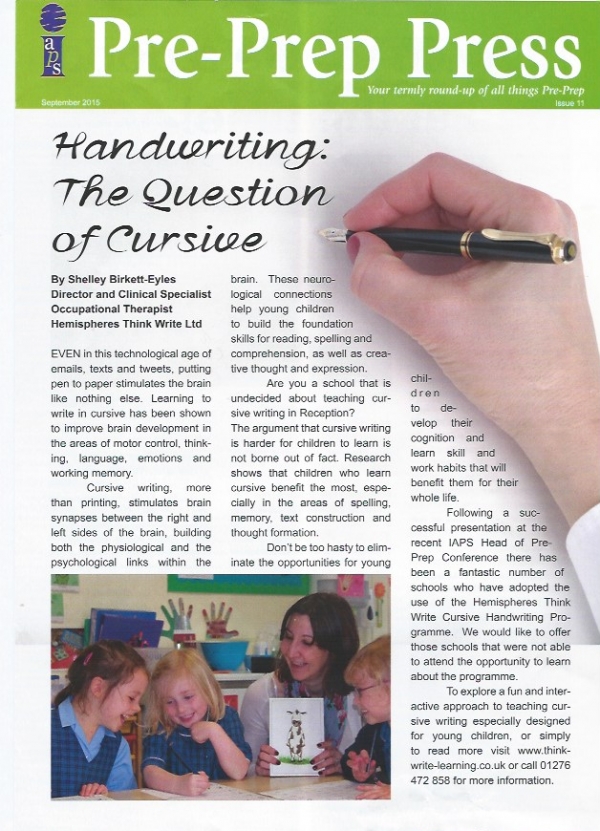
Even in this technological age of emails, texts and tweets, putting pen to paper stimulates the brain like nothing else. Learning to write in cursive has been shown to improve brain development in the areas of motor control, thinking, language, emotions and working memory.
Cursive writing, more than printing, stimulates brain synapses between the right and left sides of the brain, building both the physiological and the psychological links within the brain. These neurological connections help young children to build the foundation skills for reading, spelling and comprehension, as well as creative thought and expression.
Are you a school that is undecided about teaching cursive writing in Reception?
The argument that cursive writing is harder for children to learn is not borne out of fact. Research shows that children who learn cursive benefit the most, especially in the areas of spelling, memory, text construction and thought formation.
Don’t be too hasty to eliminate the opportunities for young children to develop their cognition and learn skill and work habits that will benefit them for their whole life.
Following a successful presentation at the recent IAPS Head of Pre-Prep Conference there has been a fantastic number of schools who have adopted the use of the Hemispheres Think Write Cursive Handwriting Programme. We would like to offer those schools that were not able to attend the opportunity to learn about the programme.
To explore a fun and interactive approach to teaching cursive writing especially designed for young children, or simply to read more visit www.thinkwrite-learning.co.uk or call
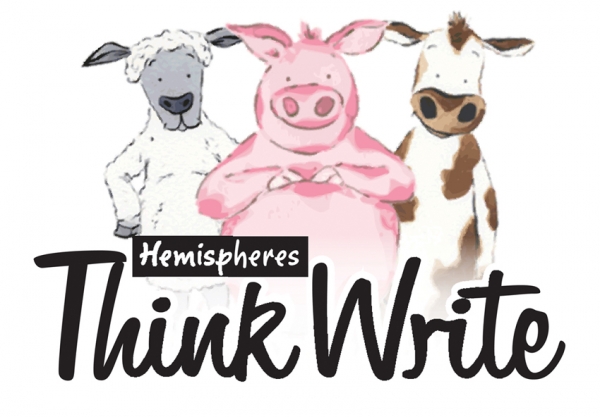
Are you a Teacher or SENCO interested in learning how to use the Hemispheres Think Write Cursive Writing Programme in your school?
The HTW programme employs proven learning techniques similar to sound symbol association. Children learn to understand the rules for formation, size, height and spatial placement so they learn to write or adapt their writing from an informed decision. The training day will explore the cognitive learning that underpins the programme, it will look and teach the HTW letter families, how to teach the programme in a mainstream class, as well as how to adapt the programme for intervention.
To express your interest and receive an early bird discount (10%) click here: Expression of interest in HTW training day
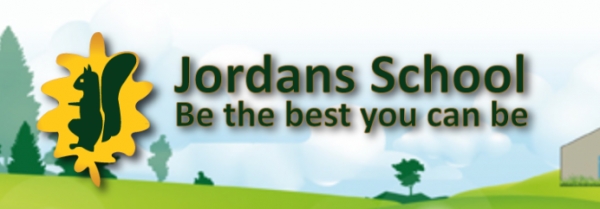
With the ever increasing move towards children using cursive writing by the end of Key Stage 1, Hemispheres Think Write is excited to announce that from September 2016, we will be, in partnership with Jordans Primary School, carrying out a pilot study to look at the impact of the Think Write handwriting programme on the quality of the children's handwriting, over a 6 month period.
We know from previous studies that the Think Write can and does make a statistical difference in the quality of children's handwriting. However, we want to show that the same level of progress can be achieve in any school.
Good teaching of handwriting, needs to include fun and interactive activities to engage children in all levels of learning. Structured handwriting programmes need to challenge all aspects of handwriting including, cognition, visual spatial planning as well as motor skills and copying.
Hemispheres believes that when children are fully engaged, understand the rules that underpin letter formation, spatial position, size and height they are empowered with the knowledge to learn the cursive writing script. The Think Write Cursive Handwriting Programme embodies all of these aspects and primarily teaches children the rules through games, activities and interactive experiences.
We look forward to confirming that the Hemispheres Think Write Cursive handwriting programme can produce excellent results in terms children's handwriting.
Thank you to Jordans Primary School for being proactive to ask.
The Think Write characters have now been made into loveable teaching toys, bringing the programme to life. They are made by hand, so be prepared to wait. Each character is able to sit and stand, show the difference in height between the characters and enhance the learning of any Nursery and Reception class.
For more details click here.
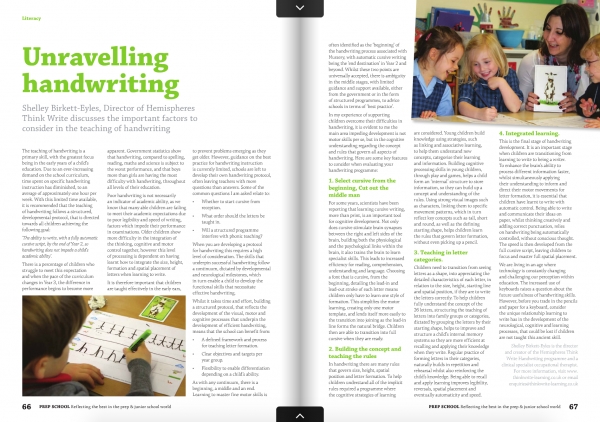
Unravelling Handwriting
Shelley Birkett-Eyles, Director of Hemispheres Think Write and Clinical Specialist Occupational Therapist, Discusses the Important Factors to Consider in the Teaching of Handwriting.
The teaching of handwriting is a primary skill, with the greatest focus being in the early years of a child’s education. Due to an ever-increasing demand on the school curriculum, time spent on specific handwriting instruction has diminished, to an average of approximately one hour per week. With this limited time available, it is recommended that the teaching of handwriting follows a structured, developmental protocol, that is directed towards all children achieving the following goal:
‘The ability to write, with a fully automatic cursive script, by the end of Year 2, so handwriting does not impede a child’s academic ability’.
There is a percentage of children who struggle to meet this expectation and when the pace of the curriculum changes in Year 3, the difference in performance begins to become more apparent. Government statistics show that handwriting, compared to spelling, reading, maths and science is subject to the worst performance, and that boys more than girls are having the most difficulty with handwriting, throughout all levels of their education.
Poor handwriting is not necessarily an indicator of academic ability, as we know that many able children are failing to meet their academic expectations due to poor legibility and speed of writing, factors which impede their performance in examinations. Older children show more difficulty in the integration of the thinking, cognitive and motor control together, however this level of processing is dependent on having learnt how to integrate the size, height, formation and spatial placement of letters when learning to write.
It is therefore important that children are taught effectively in the early ears, to prevent problems emerging as they get older. However, guidance on the best practice for handwriting instruction is currently limited, schools are left to develop their own handwriting protocol, often leaving teachers with more questions than answers. Some of the common questions I am asked relate to:
• Whether to start cursive from Reception.
• What order should the letters be taught in.
• Will a structured programme interfere with phonic teaching?
When you are developing a protocol for handwriting this requires a high level of consideration. The skills that underpin successful handwriting follow a continuum, dictated by developmental and neurological milestones, which in turn enable a child to develop the functional skills that necessitate effective handwriting.
Whilst it takes time and effort, building a structured protocol, that reflects the development of the visual, motor and cognitive processes that underpin the development of efficient handwriting, means that the school can benefit from:
• A defined framework and process for teaching letter formation.
• Clear objectives and targets per year group.
• Flexibility to enable differentiation depending on a child’s ability.
As with any continuum, there is a beginning, a middle and an end. Learning to master fine motor skills is often identified as the ‘beginning’ of the handwriting process associated with Nursery, with automatic cursive writing being the ‘end destination’ in Year 2 and beyond. Whilst these two points are universally accepted, there is ambiguity in the middle stages, with limited guidance and support available, either from the government or in the form of structured programmes, to advice schools in terms of ‘best practice’.
In my experience of supporting children overcome their difficulties in handwriting, it is evident to me the main area impeding development is not motor skills per se, but in the cognitive understanding regarding the concept and rules that govern all aspects of handwriting. Here are some key features to consider when evaluating your handwriting programme:
1. Select Cursive from the Beginning, Cut out the Middle Man.
For some years, scientists have been reporting that learning cursive writing, more than print, is an important tool for cognitive development. Not only does cursive stimulate brain synapses between the right and left sides of the brain, building both the physiological and the psychological links within the brain, it also trains the brain to learn specialist skills. This leads to increased efficiency for reading, comprehension, understanding and language. Choosing a font that is cursive, from the beginning, detailing the lead-in and lead-out stroke of each letter means children only have to learn one style of formation. This simplifies the motor learning, creating only one motor template, and lends itself more easily to the transition into joining as the lead-in line forms the natural bridge. Children then are able to transition into full cursive when they are ready.
2. Building the Concept and Teaching the Rules.
In handwriting there are many rules that govern, size, height, spatial position and letter formation. To help children understand all of the implicit rules requires a programme where the cognitive strategies of learning are considered. Young children build knowledge using strategies, such as linking and associative learning, to help them understand new concepts, categorise their learning and information. Building cognitive processing skills in young children, through play and games, helps a child form an ‘internal’ structure to store information, so they can build up a concept and understanding of the rules. Using strong visual images such as characters, linking them to specific movement patterns, which in turn reflect key concepts such as tall, short and round, as well as the defining starting shape, helps children learn the rules that govern letter formation, without even picking up a pencil.
3. Teaching in Letter Categories.
Children need to transition from seeing letters as a shape, into appreciating the detailed characteristics of each letter, in relation to the size, height, starting line and spatial position, if they are to write the letters correctly. To help children fully understand the concept of the 26 letters, structuring the teaching of letters into family groups or categories, dictated by grouping the letters by their starting shape, helps to improve and structure a child’s internal memory systems so they are more efficient at recalling and applying their knowledge when they write. Regular practice of forming letters in their categories, naturally builds in repetition and rehearsal whilst also reinforcing the child’s knowledge. Being able to recall and apply learning improves legibility, reversals, spatial placement and eventually automaticity and speed.
4. Integrated Learning.
This is the final stage of handwriting development. It is an important stage when children are transitioning from learning to write to being a writer. To enhance the brain’s ability to process different information faster, whilst simultaneously applying their understanding to inform and direct their motor movements for letter formation, it is essential that children have learnt to write with automatic control. Being able to write and communicate their ideas on paper, whilst thinking creatively and adding correct punctuation, relies on handwriting being automatically controlled, without conscious thought. The speed is then developed from the full cursive script, leaving children to focus and master full spatial placement.
We are living in an age where technology is constantly changing and challenging our perception within education. The increased use of keyboards raises a question about the future usefulness of handwriting skills. However, before you trade in the pencils and paper for a keyboard, consider the unique relationship learning to write has in the development of the neurological, cognitive and learning processes, that could be lost if children are not taught this ancient skill.
Shelley Birkett-Eyles is the Director and Creator of the Hemispheres Think Write Handwriting Programme and a Clinical Specialist Occupational Therapist.
for more information email enquiries@thinkwrite-learning.co.uk
Part 1: The Neurological Benefits of Cursive Writing
In today’s technologically advanced world, handwriting might seem like dying art, but research shows that putting pen to paper stimulates the brain like nothing else. Learning to write in cursive writing offers hidden benefits to children that they don’t get from printing letters or keyboarding.
So what does the act of joining letters together offer the developing brain of children that printing does not? The fluid, continuous motion of cursive writing offers the brain a different form of kineasthetic stimulation that helps facilitate different parts of the brain to develop and integrate, assisting in establishing the connections that enhance memory, attention, learning and emotional responses.
The brain is a complicated organ.
Our experiences and interactions form the foundations for the way we think, behave and learn. Building brain synapses and synchronicity between the different levels of the brain and across the two hemispheres helps children to develop ‘layered skills’ that enable them to eventually ‘think and write’ at the same time.
The layering of skills is the key to successful learning. Being able to reach ones academic potential is a precarious process. One that is dependent on specific skills such as handwriting, becoming subconscious or automatic, so the child is able to direct their attention and concentration to the concept of ‘what they are writing’, releasing energy to pay attention to spelling, punctuation and grammar.
The teaching of handwriting is an essential component of the early years curriculum and it needs to be acknowledged as a complicated skill that requires a consistent and dedicated approach to ensure that children at the end of Key Stage 1 are able to write without having to think about letter formation, size, height and the correct spatial placement of letters. In other words, the mechanics of handwriting.
Dr David Sortino, a psychologist and current Director of Educational Strategies in the USA explains in his articles that practicing the curls and swirls of cursive writing affords children the opportunity to naturally train the pencil grip and fine motor skills, acting as a building block rather than a stressor for young children. The cerebellum, a part of the brain located in the ‘old brain’, where the control of subconscious skills live, is directly associated with kinesthetic memory. Therefore, by teaching children one style of writing, cursive, you give them a single set of skills that will embed in their motor memories and become their ‘preferred’ way of writing.
Recent studies have shown that the cerebellum is not only responsible for the development and management of motor skills, but also supports the emotional functions such as attention, impulse control and higher cognitive skills such as problem solving and decision making. By learning a single pattern of movement for handwriting, as is developed using cursive script at the start of handwriting teaching, the children are better able to develop the automatic or subconscious control for handwriting. This frees up the ‘thinking’ parts of the brain for other cognitive skills associated with learning.
Print first or Cursive?
Children who first learn to print letters and then transition into cursive writing are essentially learning two ways of writing. In this scenario, the success of the transition is variable. Some children will be resistant to the new way of writing and find it hard to ‘over ride’ their first motor template stored in their cerebellum, and others will develop a hybrid of both print and cursive. And there will be those children that will develop good cursive handwriting because they want to and have practiced secretly.
By teaching children a single pattern of movement for handwriting, i.e. cursive, children are better able to develop the automatic or subconscious control for handwriting; freeing up the ‘thinking’ parts of the brain for other cognitive skills associated with learning. A study published in Science magazine by Shadmehr and Holcom of John Hopkins University showed that subjects who had been given physical instruction on cursive handwriting showed structural changes in their brains when imaged. Other research by Virginia Berninger, an educational psychology professor at the University of Washington, demonstrates that children are able to write faster and express more ideas when writing essays by hand rather than typing, which is supported by the evidence that cursive writing demonstrates higher SAT scores. It is believed that the speed and efficiency of writing in cursive allows the student to focus on the cohesion of their ideas, as they are not having to think about their handwriting.
There is a strong case for teaching cursive in the classroom before print handwriting. For younger children who can’t yet control their fingers in finer movements, the fluid cursive style can offer a multi layered approach to their development helping them build essential skills that they will not be asked to change later. This enhances the overall efficiency of their thinking and moving skills so freedom can be given to conscious academic learning.
The Hemispheres Think Write (HTW) handwriting programme offers schools a unique opportunity for a single and consistent approach to the teaching of cursive handwriting. The HTW focuses on mastering single cursive letters before joining the letters together, helping children master cursive quicker than other handwriting programmes. Research studies, with data taken from several different schools, show that the programme exceeds the standards set by the National Curriculum Framework, with 96% of children leaving Year 2 with full cursive automatic writing, compared to 46% of children using other teaching methods.
To find out more about the Think Write programme please email enquiries@thinkwrite-learning.co.uk , and visit the website www.thinkwrite-learning.co.uk.
Even in this technological age of emails, texts and tweets, putting pen to paper stimulates the brain like nothing else. Learning to write in cursive has been shown to improve brain development in the areas of motor control, thinking, language, emotions and working memory.
Cursive writing, more than printing, stimulates brain synapses between the right and left sides of the brain, building both the physiological and the psychological links within the brain. These neurological connections help young children to build the foundation skills for reading, spelling and comprehension, as well as creative thought and expression. Research shows that children who learn cursive writing benefit the most, especially in the areas of spelling, memory, text construction and thought formation.
Teaching our children to master cursive writing from the very beginning enables them to benefit from these enhanced neurological connections; and to layer foundation skills within the brain’s automatic systems, so they can benefit from the following improvements in their learning:
1. Improved reading skills.
As children progress in their reading, they should begin to read whole words, rather than individual letters. Cursive writing promotes whole word reading. After words, children will move onto reading sentences. Greater fluency when reading improves comprehension and learning.
2. Reduced reversal and confusion of letters.
Letters that look similar are often muddled up and reversed by children who learn to write using printed letters first. Letters such as ‘b’ and ‘d’, ‘f’ and ‘t’, ‘g’, ‘q’ and ‘p’ are the most commonly confused letters. The consistency of the start and end point in cursive writing helps children to learn the directionality of the letters earlier. The animal categories used in the Think Write programme offer additional learning tools to help childrenmaster directionality for letter formation.
3. Enhanced spelling ability.
Young children start to spell phonetically or using sounds to help them build words. However, the English language does not remain this simple for long and children soon have to use their visual memory to remember what words ‘look like’. Cursive writing develops at around the same time and the motor memory for the ‘feel’ of words supports and enhances children’s spelling, especially from year 2 onwards, when children are starting to express their own ideas on paper.
4. Minimised erratic spaces between letters and words.
The linking of letters together supports the development of motor memories for the spelling, formation and size of letters and words within sentences. Children learn to naturally ‘break’ the letters between the words. In the continuous cursive script there are fewer stop/start movements in the hands, helping children to learn to judge the spaces between letters within a word, and between words within a sentence.
5. Development of internal control system as a tool for learning.
As discussed in the article’ ‘The Neurological Benefits of Cursive Writing’, learning to write in cursive script from the beginning builds an internal control system that incorporates movement, sensation and visual skills; layering skills together to form a complex network of neural connections. These networks link to and associate with other forms of learning, helping to underpin the organisation of other kinds of information and skills.
6. Enhanced skills for patterns in reading and writing.
Unlike print writing, lower case cursive writing uses the same start point for each letter. The continuity of the starting position reduces the tendency to invert and reverse letters when writing, building a motor memory for the shape, length and sequencing of words. An internal system builds memories for the shape, length and sequence of letters, supporting the development of reading and spelling.
7. Improved speed and control for putting thought to paper.
When children write too slowly, they cannot remember all their ideas; some are forgotten before they have a chance to write them down. If taught effectively, cursive writing can automise motor movements, leaving a child with more time available to concentrate on creative ideas.
Let’s not be hasty to eliminate opportunities for young children to develop their cognition and learn skills and work habits that will benefit them for the rest of their lives. Let’s teach children cursive writing from the very beginning and make it fun, by using a tried and tested structure such as the Hemispheres Think Write Handwriting Programme for schools and parents.
To find out more about the Think Write programme please email enquiries@thinkwrite-learning.co.uk, and visit the website www.thinkwrite-learning.co.uk
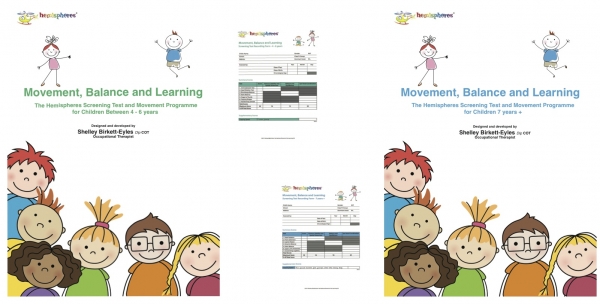
Hemispheres Movement Balance and Learning: Screening Tests and Movement Programmes
The Hemispheres Movement, Balance and Learning is a programme that is based on sound clinical research and experience. It offers non clinicians some skills to help identify core neuromotor weaknesses that if left undetected can begin to really impact on a child's learning. Neuromotor weaknesses such as retention of key primitive reflexes (ATNR), evidence of asymmetry that can lead to immature laterality, crossing midline, spatial awareness and balance.
Whilst these skills impact on physical development, they play a key role in the integration of the brain for thinking and learning. The movement programme is one with a difference. The 6 weeks programme is different for each age group. It is a structured programme that inherently offers consistency, challenge and repetition, the ingredience needed by the brain to create real changes in how the brain and body communicate.
The two different programmes offer:
- Simple to deliver age appropriate neuromotor screening tool.
- 6 week movement programme designed by a clinical specialist occupaitonal therapist.
- A movement programme fthat can be delivered in small groups, individually, at school or home.
- Ready made instructions so parents can easily deliver the programme at home.
- Consent form.
What makes this programme different?
The Hemispheres Movement, Balance and Learning is a programme that is based on sound clinical research and experience. It offers non clinicians some skills to help identify core neuromotor weaknesses that if left undetected can begin to really impact on a child's learning. Neuromotor weaknesses such as retention of key primitive reflexes (ATNR), evidence of asymmetry that can lead to immature laterality, crossing midline, spatial awareness and balance.
Whilst these skills impact on physical development, they play a key role in the integration of the brain for thinking and learning. The movement programme is one with a difference. The 6 weeks programme is different for each age group. It is a structured programme that inherently offers consistency, challenge and repetition, the ingredience needed by the brain to create real changes in how the brain and body communicate.
Does the programme work?
47 children completed the initial study at Yateley Manor School in Hampshire. The children were assessed pre and post treatment, controlled groups were used to demonstrate the sensitivity of the tool and the degree of change following treatment. The movement programme was completed at home under the guidance of the parents, daily for 6 weeks. The programme takes approximately 10 -15 minutes a day. All the children made statistically significant improvement following treatment, greater change was observed in the boys compared to the girls especially in stability, spatial awareness and posture. Both boys and girls showed statistically significant improvement in balance, handwriting legibility and speed. Studies are ongoing.
Phase 2 Study Data:
How Quickly Does the HTW Impact on the Quality of Children’s Handwriting in Reception, Year 1 and Year 2?
Aim of the Study: Extending the findings from the study data in Phase 1, it was decided to change the sample collections from twice a year to every 6 weeks so we could evaluate the rate at which the quality of children’s handwriting improved using the Hemispheres Think Write Handwriting Programme.
Method: All children within two schools (Yateley Manor School and Hall Grove School) were asked to copy a prescribed pangram. Samples were taken every 6 weeks following a baseline sample for 24 weeks. The samples were collated and then scored against the same 25-quality statement used in Phase 1, giving each child a total score of 25.
The 25 statements were categorised into 5 subsections: legibility, size, script, reversals and spatial placement.
Sample: The children were matched for age and gender, and all schools participating were within the independent sector. Samples were taken from 216 children across both schools, 144 were boys and 72 were girls.
Findings: The final scores for all children were compared using Analysis of Covariance (ANCOVA) with fixed effects for school, gender and year. When comparing the final scores of each sample taken at 6 week intervals, a statistically significant result (p=<0.0001) was achieved showing that children made significant improvement in the quality of handwriting between each sample. In general the greatest level of change in the scores is noticed at review 2 (12 weeks) and 4 (24 weeks) with no significant change noted at review 3 (18 weeks). The level of progress between review 3 and review 4 is superior at review 4. This translated indicates that children using the Hemispheres Think Write make significant improvement in the quality of their handwriting from the baseline within 24 weeks from starting the programme.
In Summary: The results of this study indicate that children make significant improvement in the quality of their handwriting within 24 weeks from starting the Hemispheres Think Write Programme. The improvements observed in using the Think Write programme are consistent across both schools, all year groups tested (Reception, Year 1 and Year 2) and were equal between boys and girls. Reversal followed by script has the biggest change from the baseline improving legibility, with more variability noted in size and spatial placement.
Impact on the Quality of Children’s Handwriting following the Implementation of the Hemispheres Think Write Handwriting Programme at Hall Grove School
Shelley Birkett-Eyles
With the start of any new programme evaluating the benefit it brings is an essential part of the implementation stage. Hall Grove School started using the Hemispheres Think Write Programme in March 2014, the Think Write Programme was rolled out into Reception, Year 1 and Year 2 with a focus on the earlier years.
Sample and method:
To evaluate the impact the programme was having, handwriting samples were taken every 6-week, for all children (total of 110 children: 80 boys and 30 girls) across the three year groups. The sample of writing was then scored against 25 quality statements, for 5 quality categories: legibility, size, form, reversals and spatial placement. Each quality category contained 5 statements, each statement worth 1 point, giving a possible score of 25 points per child. A score of 17 points or more (68%) was deemed to reflect a high standard of legibility and the results below in the graph reflect the percentage of children achieving this standard at each 6 weekly review.
Results:
The results indicate that the pattern of progress for each cohort of children differs. In this male dominant Pre-Prep environment, the Reception children, the results show that after 18 week of HTW instruction, 17% of the children achieved a quality score of 17 or more. In Year 1, the results indicate the children show consistent progress in the quality of their writing, over the 18 weeks. The baseline measure indicates that 13% of the children were achieving the quality score of 17 or more, however after 6 weeks of using the Think Write programme, this increased to 26% and up to 34% after 18 weeks.
In Year 2, the baseline measure shows that 37% of children achieved a score of 17 or more, rising to 66% after 6 weeks, there was noted to be a small reduction to 56% on the final review, a difference not thought to be significant but part of natural variation.
Discussion:
Handwriting is a key part of any child’s curriculum between the ages of 4 – 7 years when the skill of learning to handwrite is an active process, building the foundation for transitioning into being a writer. An effective handwriting programme needs to be able to address the diverse stages of learning to write, and support all children to develop the motor, cognitive and visual skills for legible, automatic writing.
In this pilot study, the aim of the programme was to evaluate the impact of the Hemispheres Think Write programme on the quality of children’s handwriting over time. Whilst we acknowledge that the sample size is small, and specific to one school, from the results it can be concluded that the programme does have a positive impact on children’s handwriting, and improvements can be seen in all cohorts of children between Reception and Year 2.
There is a trend that demonstrates an overall improvement in handwriting for all age groups, 17% growth in Reception, 21% growth in Year 1 and 19-29% growth in Year 2 supporting the premise that this programme is suitable for delivery as part of a mainstream curriculum.
The study was completed in a sample of children where 72% were boys and 28% girls, therefore one can conclude that the programme has beneficial effects for the education of handwriting with both boys and girls.
Conclusion:
The results of this study compliment the initial pilot study undertaken between Twyford School and Yateley Manor between 2012- 2013. The conclusion of this study indicated that at the end of one academic year the children using the Hemispheres Think Write programme achieved higher quality scores in their writing compared to those children being taught using the PenPals Handwriting Programme.
This pilot study is important as it shows that the Hemispheres Think Write programme continues to have a beneficial effect on the quality of children’s handwriting between the ages of 4 – 7 years but adds further clarity in the speed at which the benefits are evident. This pilot study shows that there is a steady growth in the quality of handwriting, for both boys and girls and the results are evident in the children’s handwriting in less than 18 weeks.
Further studies will need to be undertaken with a larger cohort of children in a diverse number of educational settings to establish a stronger statistical foundation for the benefits of the programme, however as the programme grows, more children will enjoy learning to write using the Hemispheres Think Write Programme.
Hemispheres are really thrilled with the interest of the schools attending the IAPS conference. The stand is a fantastic way for the delegates to handle, look and ask questions about the different programmes.
Phase 4 Study Data:
Do all Schools Show the Same Rate of Progress?
Aim of the Study: Analysing the same data sample as Phase 3, the data was reviewed to see if there was any difference in the progress according to the school. The aim of this analysis was to look at whether there was a difference noted in the children’s progress depending on which school they were at.
Method: All children within two schools (Yateley Manor School and Hall Grove School) were asked to copy a prescribed pangram. Samples were taken every 6 weeks following a baseline sample. The samples were collated and then scored against the same 25-quality statement used in Phase 1 & 2, giving each child a total score of 25. The 25 statements were categorised into 5 subsections: legibility, size, script, reversals and spatial placement.
Sample: The children were matched for age and gender, and all schools participating were within the independent sector. Samples were taken from 216 children across both schools, 144 were boys and 72 were girls.
Findings: The final scores for all children were compared using Analysis of Covariance (ANCOVA) with fixed effects for school, gender and year. The data did not show any significant difference in the final scores between the different schools, the children in both schools made the same level of progress.
In Summary: The results show that the rate of progress in the quality of children’s handwriting is consistent between the two schools with no significant difference noted. Both of the schools participating in the sample collection received the direct teacher training and this may be a factor in the programme being delivered consistently in the schools.
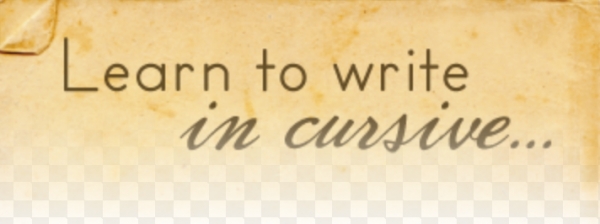
For Teachers
Hemispheres Think Write is an ideal handwriting programme for schools; it is fun, exciting and engages children actively in their learning. The programme is developmentally appropriate for children in stage 1, and is inherently flexible to enable clear and easy differentiation for the different learning levels within a mainstream classroom.
The programme is easily administered, starting with as little as 15 minutes a day the children will soon learn the foundations for handwriting, enabling the delivery time to be reduced to 2-3 times per week to maintain the children's learning.
This programme offers interactive games to build a strong cognitive understanding of the concept of handwriting, it can be delivered as a whole class, in small groups and for those that need a little extra support on an individual basis.
Recommended practice:
- Introduce the games and activities, each day for 15 minutes. 5 minutes introducing the characters and then 10 minutes practicing and reinforcing the connection to movement and letters
- Introduce the cognitive categories and games after having covered the single phonemes, so children are ready for learning letter formation.
- Consider using the programme every morning for 15 minutes per day to ensure consistency and repetition
- Build activity stations into the 15 minutes per day so children can practice the skills in different ways
- Build individual activities for those children who require a slower pace of learning or more repetition to consolidate their learning
For Learning Support
The Hemispheres Think Write programme works. The active integration of games, activities and play to help children build the necessary cognitive, motor and visual processing skills are an inherent part of this programme. This programme can be adapted and changed to build, to meet the individual needs for children with all levels of difficulty, from learning how to form the letters, to building cognitive structures to support retrieval and recall of the rules and visual processing, planning and organization skills for spatial placement.
What sets Hemispheres think write apart, is that is addresses the three component areas of handwriting: starting with the primary skill of cognitive understanding of the rules that govern letter formation, size and spatial position establishing a strong cognitive understanding before introducing letter formation and motor planning. This offers children the opportunity to build confidence in their understanding, whilst consolidating their fine motor skills, so they can bring both together at the right time to ensure success in using the right motor plan for letter formation.
Why it works for children with learning needs:
- Easy step by step approach to support individual educational targets
- Deliverable in small groups or individual basis
- Easy targets and games can be used at home to support learning targets
- Parent resources to help support the programme at home
- The emphasis on categorization and linking supports the natural cognitive skills, and simplifies the 26 alphabet letters into three letter formation groups and one group for spatial placement.
- The programme uses games, and play to establish or reorganize a child's thinking skills.
- The games are fun and interactive helping to reduce stress and anxiety for those children who are frustrated and struggling
- Cognitive appreciation and awareness can be used to help children over come any motor planning difficulties that affect letter formation
- The games help reorganize stored knowledge and help children to gain confidence in what they know
- The cognitive structure supports the role of the working memory and helps build speed in retrieval and recall.
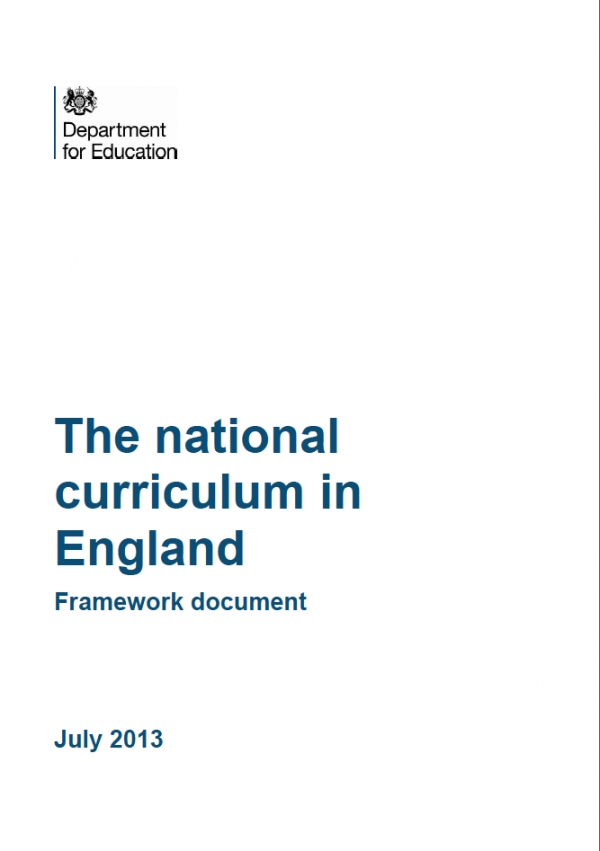
Can the Think Write Helps Schools Achieve the National Curriculum Guidelines for Handwriting?
In 2013 the government released the national guideline to schools, stating the standard of education the government was expecting. This lengthy document covers all aspects of the curriculum and for the purposes of handwriting, the government expectations for handwriting have been summarised:
In Year 1:
- Accurate formation of all 26 lower case letters, with correct direction, start and finishing points
- Form all capital letters Understand which letters belong to ‘handwriting families’
In Year 2:
- Form all letters with the correct size
- Write with correct spacing
In Year 3 & 4:
- Use correct horizontal and diagonal strokes to understand how to join letters
- Increase legibility, consistency and quality of handwriting
In Year 5 – 6
- Write fluently and with increased speed
Hemispheres have carried out a series of studies to evaluate whether the Think Write is an effective programme in meeting the national standards for handwriting.
The results show that those children who have been taught using Think Write achieve the expectations for letter formation including start and finishing points are achieved by the end of Reception, rather than Year 1 and that the structure of the programme fully supports the instruction of ‘handwriting families’. 86.5% of the children leaving Year 2 are achieving the standards expected for children in Year 3 & 4 and most of the children are showing consistency in the fluidity of their writing before transitioning into Year 3.
The HTW also embodies the recommendations set out by the National Curriculum:
- HTW correct direction, start and finishing points.
- Core to its teaching, HTW is structured around a simplified group of ‘families’.
- The animal characters teach children the rules for the correct size of each letter.
- correct spacing
- Module 4 builds in the transition from print to cursive
- Increase legibility, consistency and quality of handwriting
- Children by the end of Year 2 are able to write fluently and therefore can concentrate on developing their handwriting speed.
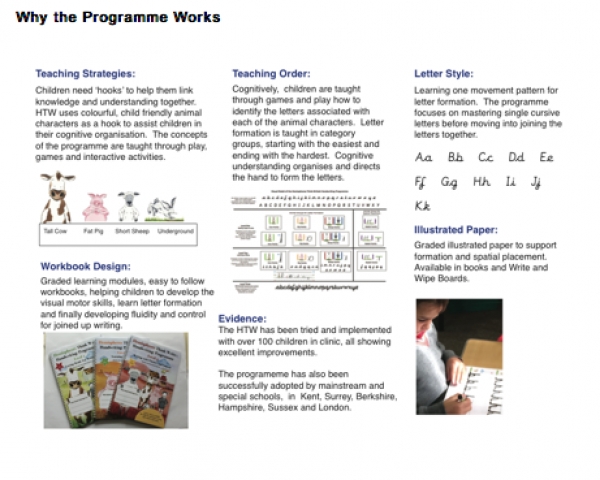
The Hemispheres Think Write® Handwriting Programme combines clinical, psychological and educational research to build a cognitive framework using positive and developmentally appropriate resources and strategies for use by parents, teachers and therapist to help children learn how to write in a fun, interactive and engaging process.
The programme follows research that demonstrates children learn more effectively by actively doing, with visual materials that build an internal cognitive structure that help children ‘hook’ their learning together.
The Think Write Handwriting programme teaches a single motor programme for the formation of letters, linking the motor skills to an visual cognitive framework using the skills of categorisation and linking knowledge, to aid recall and motor planning.
The programme offers teachers, parents and therapists a structured programme offering happier ways for children to master handwriting.
Why The Programme Works
Teaching Strategies
Children need "hooks" to help them link knowledge and understanding together. HTW uses colourful, child friendly animal characters as a hook to assist children in their cognitive organisation.The concepts of the programme are taught through play, games and interactive activities.
Workbook Design
Graded Learning modules, easy to follow workbooks, helping children to develop the visual motor skills, learn letter formation and finally developing fluidity and control for joined up writing.
Teaching Order
Cognitively, children are taught through games and play how to identify the letters associated with each of the animal characters. Letter formation is taught in category groups, starting with the easiest and ending with the hardest. Cognitive understanding organises and directs the hand to form the letters.
Evidence
The HTW has been tried and implemented with over 100 children in clinic, all showing excellent improvements.
The programme has also been successfully adopted by mainstream and special schools in Kent, Surrey, Berkshire, Hampshire, Sussex and London.
Letter Style
Learning one movement pattern for letter formation. The programme focuses on mastering single cursive letters before moving into joining the letters together.
Illustrated Paper
Graded illustrated paper to support formation and spatial placement. Available in books and Write and Wipe Boards.
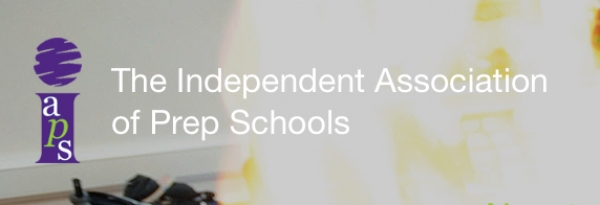
Don't miss out, book into you diary the Head of Prep-Prep Conference. Next year. Shelley the director and creator of the Hemispheres Think Write is proud to have been asked to present and also run a workshop on the benefits of using the Hemispheres ThinkWrite programme as part of the curriculum.
Don't forgot to browse at the stall, and ask any questions you may have.
See you in March 2015
Last month we introduced you to the unique Hemispheres Think Write Handwriting programme with a short summary of the development and structure of the programme. Expanding the awareness of the Hemispheres Think Write is something Hemispheres is passionate about as we believe that this revolutionary programme will help provide the educational system with a structured, exciting and fun educational programme to help children between 3 - 8 years of age master the skills for automatic writing.
The interactive games and activities of the Hemispheres Think Write Handwriting Programme builds and develops a strong cognitive template that is used to guide the development of letter formation using recurring motor patterns, categorising the 26 letters into 3 groups for letter formation and 1 group for spatial placement. The cognitive framework of the Hemispheres Think Write supports children's learning by linking old and new learning together, expanding and categorising learning for ease of storage and retrieval, essential qualities for the development of automatic writing by the end of Key stage 2.
How Can Hemispheres Think Write Help Schools?
The 2013 Curriculum Framework sets out broad expectations for the development of handwriting, starting with holding a pencil correctly, forming lower case letters with the correct starting and finishing points, capital letters and numbers from 0-9, ending in Year 3 with children being able to write automatically using joined up handwriting with fluency and speed. The Hemispheres Think Write provides schools with a structured, easy to deliver handwriting programme for children between 3 - 8 years of age. There are three distinct levels of learning with specific activities, workbooks and resources to support a children's learning in the classroom and at home. Schools benefit from the uniformity of approach to teaching handwriting, supported by clear targets and outcomes. The programme has been tried and tested over 2 years in mainstream schools with impressive results. After the first 12 months of the study, 94% of children using the Hemispheres Think Write programme were writing with automatic joined handwriting with correct spatial placement, sizing and directionality, compared to 46% of children who were using PenPals. The improvements were consistent across the age ranges tested (Reception, Year 1 and 2) and showed equal benefit to both boys and girls, across the age ranges.
How Can Hemispheres Think Write Help Parents?
As occupational therapist we appreciate the challenge that some parents face when they see their child struggling to express their learning. We have been using the programme in clinic for over 4 years, developing its use as a remedial programme, and the versatility of the programme means we have successfully been able to improve the handwriting across a spectrum of difficulties. The Hemispheres Think Write Programme is a fun, interactive but comprehensive programme of activities, games and workbooks to help children master the complex skills of handwriting. The interactive nature of the programme is easy and fun to deliver at home, and in many ways releases the 'pressure' placed on the fine motor skills, and initially your child will be taught the cognitive framework which will help them organise their knowledge into groups so their learning and understanding of letters, their formation and spatial placement becomes easier.The cognitive framework of the Hemispheres Think Write categorises your child's learning enabling them to learn from a foundation of understanding, reducing and focusing the handwriting practise, and ultimately making handwriting an enjoyable activity rather than a chore. When choosing the Hemispheres Think Write, you have available to you a selection of child friendly resources, structured into 3 levels so you and you child can see progression and success as you move through the programme. For children with specific learning needs the programme offers clearly defined targets which build together the motor- cognitive template for every child to improve and succeed.
How is the Hemispheres Think Write Programme Structured?
The Hemispheres Think Write Programme has three consecutive levels of instruction, and aims to teach children the cognitive, motor and visual skills that support the five distinct qualities of handwriting: legibility, form (cursive) size, spatial placement and directionality.
The programme has three distinct levels:
- Getting Ready for Writing - Establishing the cognitive framework through movement and games, building the eye hand co-ordination and pre writing skills.
- Learning to Write - Mastering letter formation, establishing the correct motor templates for starting and finishing letters, and linking the cognitive and motor skills together helping children to crack the code that underpins handwriting
- Writing with Fluency and Speed - Building the knowledge for joining letters together, establishing automatic writing to enhance speed and fluency.
Interested to Know More?
Hemisphere is excited about sharing the programme with both Schools, Parents and Therapist. If you are interested to know how you can use the programme yourself, please click here and we would be delighted to talk to you personally.
Testimonials: Evidence of Success.
The Hemispheres Think Write Programme has been very helpful in the Early Years and in Year 1. By the beginning of Year 2 children have developed a quicker more fluent, neat joined handwriting. We find the illustrated Hemispheres paper makes the transition to using other paper formats easier.
Karen Rogers and the Teaching Staff at Twyford Pre-Prep, Winchester
Having just started to implement the Think Write Programme, the children have been really motivated by the characters and love performing the actions and sounds. They are already making links between the starting shapes and the different letters and the children with a good grasp for holding writing implements are using lead in lines with more confidence and consistency in their writing. The programme fits in well with the weekly timetable for focused teaching and practise activities.
Philippa Gent, Head Of Pre-Prep, Hall Grove School, Surrey
The Year 3 children coming up from Pre-prep have neat, speedy cursive script in most cases - thanks to your scheme.
Angela Browning, Head of Learning Support, Twyford Middle School.
Before we started the Hemispheres Think Write programme Jude's writing was large, never on the line,it was not uniform, letters were formed incorrectly and inconsistently and often were back to front. He was extremely negative about writing and anything to do with it, which made it very difficult to work on this with him. We started the Hemispheres Think Write and Jude soon had a grasp of which letters went with which animals and from that point he really flew with it and he started to take great pride in his knowledge of the letter groups and discovered that using this technique he could produce beautiful writing. Several months later Jude fluently writes using all his Think Write techniques naturally without a second thought. This is now the way he writes. His school has noticed a huge improvement and are delighted with his progress. Thank you Hemispheres for devising such a brilliant programme - I could not recommend it more highly.
Jacqui McNaughton, Mother of Jude aged 6 years.

Hemispheres Movement Balance and Learning: Screening Tests and Movement Programmes
The Hemispheres Movement, Balance and Learning is a programme that is based on sound clinical research and experience. It offers non clinicians some skills to help identify core neuromotor weaknesses that if left undetected can begin to really impact on a child's learning. Neuromotor weaknesses such as retention of key primitive reflexes (ATNR), evidence of asymmetry that can lead to immature laterality, crossing midline, spatial awareness and balance.
Whilst these skills impact on physical development, they play a key role in the integration of the brain for thinking and learning. The movement programme is one with a difference. The 6 weeks programme is different for each age group. It is a structured programme that inherently offers consistency, challenge and repetition, the ingredience needed by the brain to create real changes in how the brain and body communicate.
The two different programmes offer:
- Simple to deliver age appropriate neuromotor screening tool.
- 6 week movement programme designed by a clinical specialist occupaitonal therapist.
- A movement programme fthat can be delivered in small groups, individually, at school or home.
- Ready made instructions so parents can easily deliver the programme at home.
- Consent form.
What makes this programme different?
The Hemispheres Movement, Balance and Learning is a programme that is based on sound clinical research and experience. It offers non clinicians some skills to help identify core neuromotor weaknesses that if left undetected can begin to really impact on a child's learning. Neuromotor weaknesses such as retention of key primitive reflexes (ATNR), evidence of asymmetry that can lead to immature laterality, crossing midline, spatial awareness and balance.
Whilst these skills impact on physical development, they play a key role in the integration of the brain for thinking and learning. The movement programme is one with a difference. The 6 weeks programme is different for each age group. It is a structured programme that inherently offers consistency, challenge and repetition, the ingredience needed by the brain to create real changes in how the brain and body communicate.
Does the programme work?
47 children completed the initial study at Yateley Manor School in Hampshire. The children were assessed pre and post treatment, controlled groups were used to demonstrate the sensitivity of the tool and the degree of change following treatment. The movement programme was completed at home under the guidance of the parents, daily for 6 weeks. The programme takes approximately 10 -15 minutes a day. All the children made statistically significant improvement following treatment, greater change was observed in the boys compared to the girls especially in stability, spatial awareness and posture. Both boys and girls showed statistically significant improvement in balance, handwriting legibility and speed. Studies are ongoing.

Plan a Think Write In-Service
We would love to help you deliver an in-service to introduce your teachers to Hemispheres Think Write®. We are happy to visit your school to discuss how the programme can meet the needs of your teachers and students.
For more information call: 01276 472 858 or email enquiries@thinkwrite_learning.co.uk
Plan a Think Write Workshop
Our training can be customized for schools and areas that want to bring professional development opportunities directly to their staff. Workshop are easy to organize and cost-effective. We will send a trained presenter to lead your interactive training session and address your group’s specific needs.
Call 01276 472858 for more information or email training@thinkwrite_learning.co.uk to learn more about sponsoring your own workshop.
Pilot the Think Write Handwriting Educational Programme
Are you interested in piloting, adopting or evaluating our program? Contact us on 01276 472 858 or email opportunities@thinkwrite_learning.co.uk
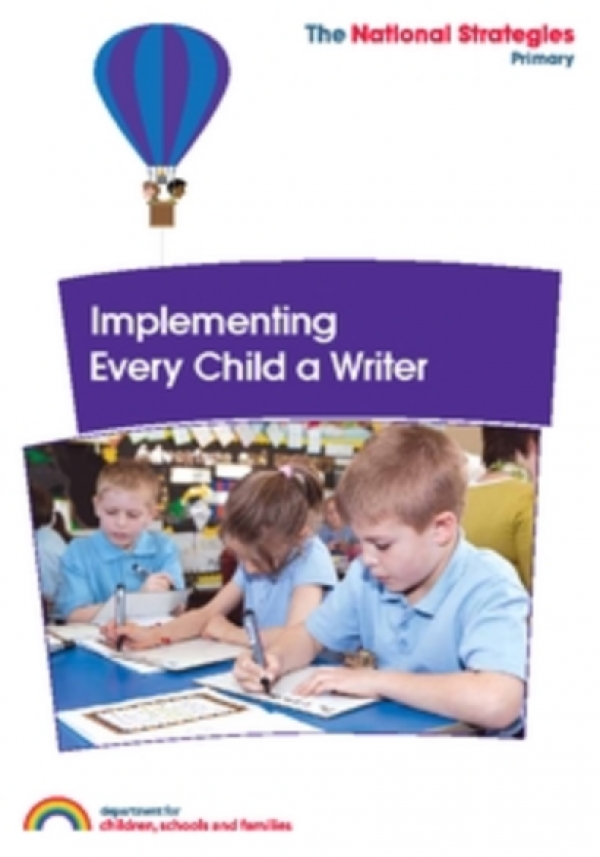
The government paper published in 2008, Every Child is a Writer (ECaW) reported the number of children who were failing to meet the expected attainment in Handwriting in the UK was 32% compared to 13% for reading and 21% in arithmetic. Published within these findings was a discrepancy between the performance of boys and girls. Of the 68% of children who were found to be achieving the attainment in handwriting, 75% of girls compared to 61% of boys.
Further studies reported by the government in 2010 report continuing problems in the quality and legibility of children’s writing, implying that the poor quality of writing was likely to impact on children’s academic scores, as a strong correlation between poor handwriting and weaker pieces of work were reported (Stainthorp and Rauf, 2009).
Rather distressingly the evidence suggests that poor handwriting is a general concern that affects a significant number of children in the UK and is not isolated to children who have other learning difficulties, but present in our academically able children.
Handwriting on the whole is a complex activity for children to learn, but there appears to be a lack of suitable instruction programmes to help guide the curriculum or inform the teachers on the most effective way of teaching this skill.
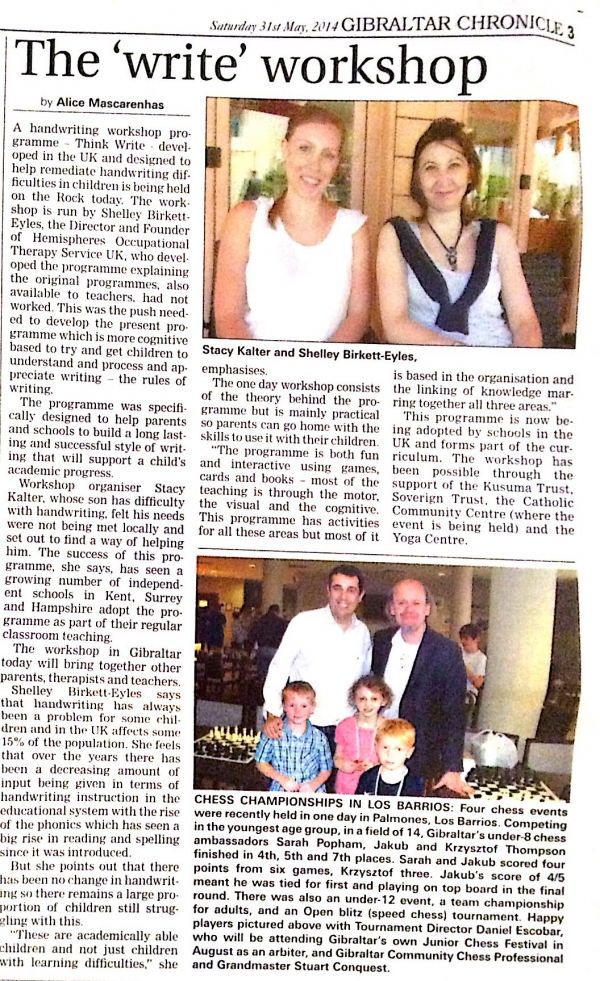
At the request of a group of proactive parents, a local trust funded a ThinkWrite Workshop, training 12 parents, 10 primary school teachers and 6 therapists. The workshop raised productive discussion on the teaching of handwriting, how schools support children who need extra help with writing, and the inter agency role in the development of handwriting in young children.

Help for children learning to write - A structured handwriting skills development programme
for PARENTS
for THERAPISTS
Sign Up
Terms & Conditions
Privacy Policy
About Cookies
Site Map
The Granary,
Rectory Farm,
Broadway Road,
Lightwater,
Surrey GU18 5SH
Tel: 01276 472 858
enquiries@thinkwrite-learning.co.uk





 offers all schools a lively engaging way of teaching handwriting
offers all schools a lively engaging way of teaching handwriting